TAG Heuer and Porsche Unite Forces, With the New Carrera Porsche Chronograph
The TAG Heuer Carrera Porsche Chronograph celebrates the alliance between two powerhouses whose paths have always met on the racetrack.
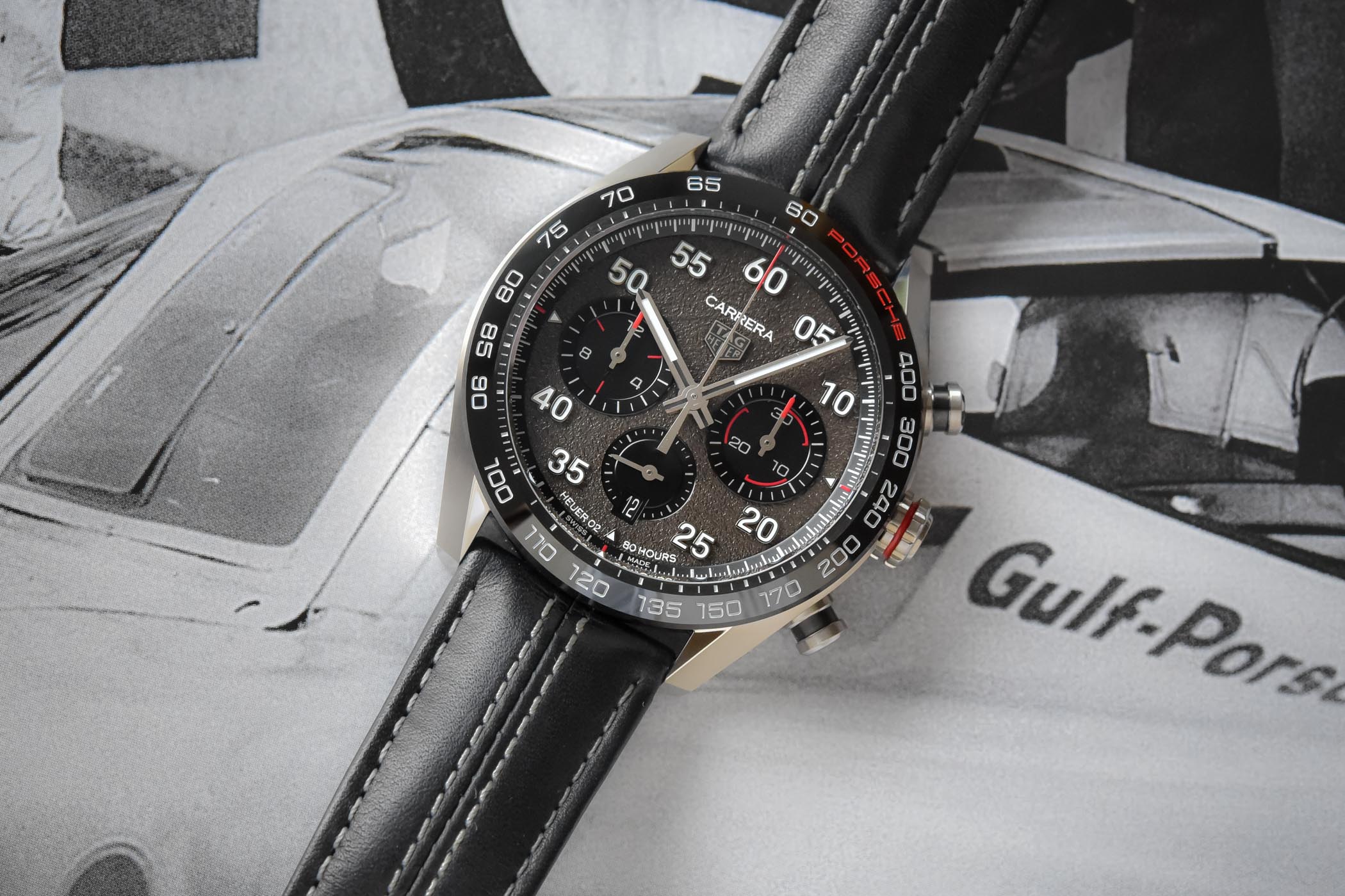
The alliance between TAG Heuer and Porsche is the culmination of a fascinating and entwined history marked by an obsession with speed and motorsports. Envisioned as a collaboration ranging from competition to product development, the partnership between the two powerhouses is celebrated with a 44mm TAG Heuer Carrera Porsche Chronograph. For many, this partnership is a match made in heaven. Marrying the Swiss watchmaking brand with the strongest ties to motorsports to the legendary German sports car brand makes a lot of sense, especially since both brands happen to have products with the name Carrera. The name Carrera for watchmaking fans is the soul of TAG Heuer incarnated by Jack Heuer’s 1963 chronograph, at Porsche, the name Carrera is synonymous with the carmaker’s most powerful engines. Let’s take a closer look at the remarkable histories of both brands and how an open-road race in Mexico inspired their most emblematic products.
Obsessed with speed
Born just 35 years apart, I very much doubt that Edouard Heuer (1840-1892), founder of Heuer watches, and Ferdinand Porsche (1875-1951), automotive pioneer, would be surprised by the latest TAG Heuer/Porsche alliance. After all, they were both obsessed with harnessing speed and became pioneers in their respective fields. No matter what speed records can be conquered, speed is meaningless without time. From the very start, the Swiss watchmaker was determined to measure speed in timing devices capable of capturing ever-increasing fractions of a second.
The Heuer Watch Company, founded by Edouard Heuer in 1860 in the Swiss Jura, quickly established itself as a reference in precision timing instruments. Following his patent for a keyless winding system in 1869, Heuer invented the oscillating pinion for stopwatches. Patented in 1887, it consisted of a movable shaft with two differently toothed gears that could be engaged to make the chronograph function, start or stop by simply pressing the respective pushers. To give you an idea of the importance of this development, the oscillating pinion is still a staple component in chronographs today.
The compulsion for capturing ever-smaller units of elapsed time ran thick in the Heuer family’s genetic makeup, and his son, Charles-Auguste Heuer, produced a stopwatch capable of measuring 1/100th of a second. Patented in 1916, the Mikrograph beat at a breakneck speed of 360,000vph. Thanks to this hyper-precision timer, Heuer and his Mikrograph were invited as the official timers of three Olympic Games (Antwerp 1920, Paris 1924 and Amsterdam 1928).
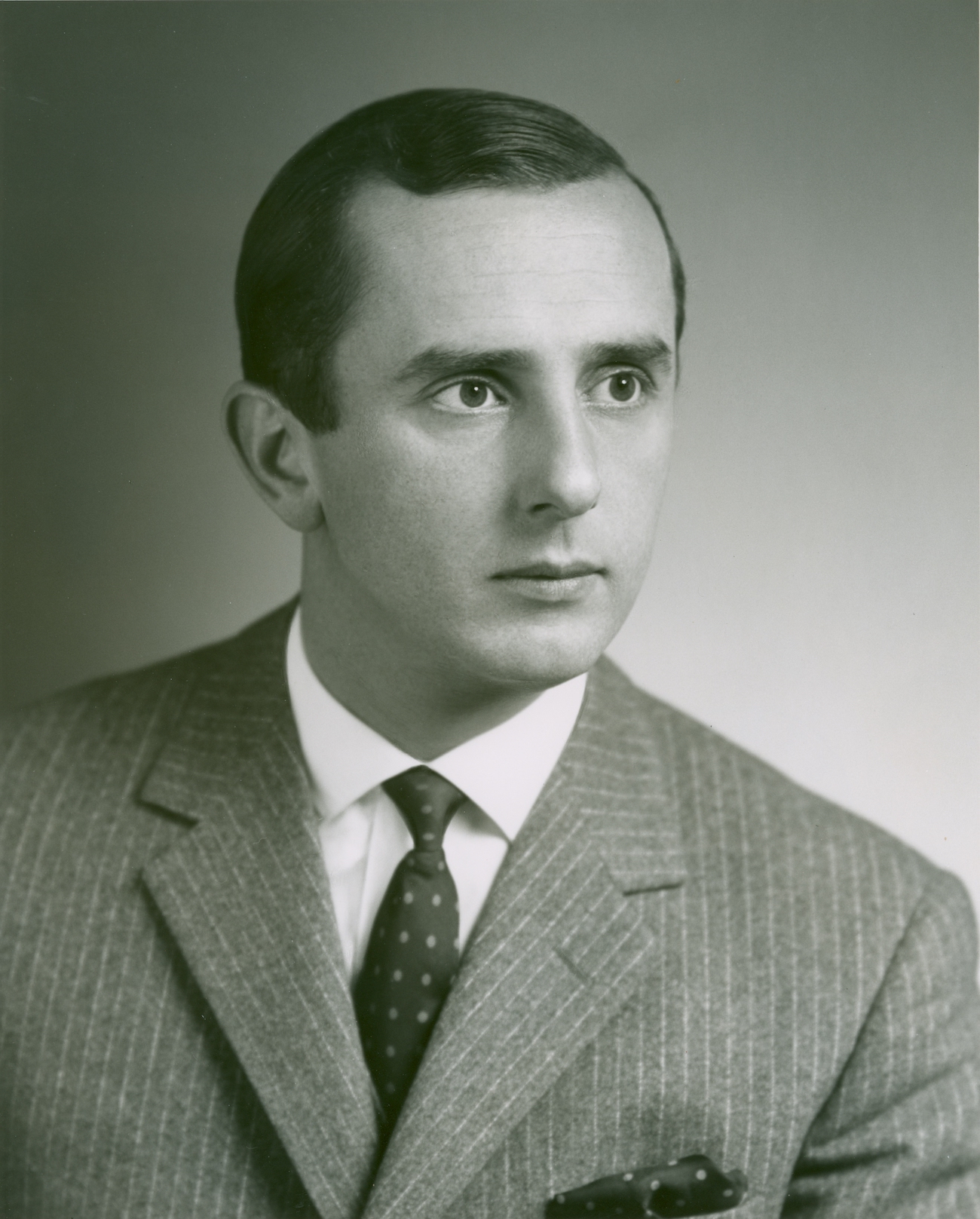
Accelerating into higher speed sports, Heuer launched the AUTAVIA (a contraction of AUTomobile and AVIation), a dashboard stopwatch for race cars (boats and aircraft) and the design forefather of the wrist chronograph with a turning bezel launched in 1962 with Jack Heuer at the helm.
Meanwhile, with his engineering background and fascination for all things electrical, Ferdinand Porsche was busy making a name for himself as a vehicle engineer. While at Jacob Lohner & Co. in Vienna, Porsche developed an electric wheel-hub engine (the world’s first four-wheel drive) that powered the Lohner-Porsche and amazed the crowds at the 1900 Paris Exposition. By 1931, Ferdinand Porsche was ready to go solo and founded the Porsche car company. Just three years later, he and his son Ferdinand (Ferry) produced the first designs of the Volkswagen car.
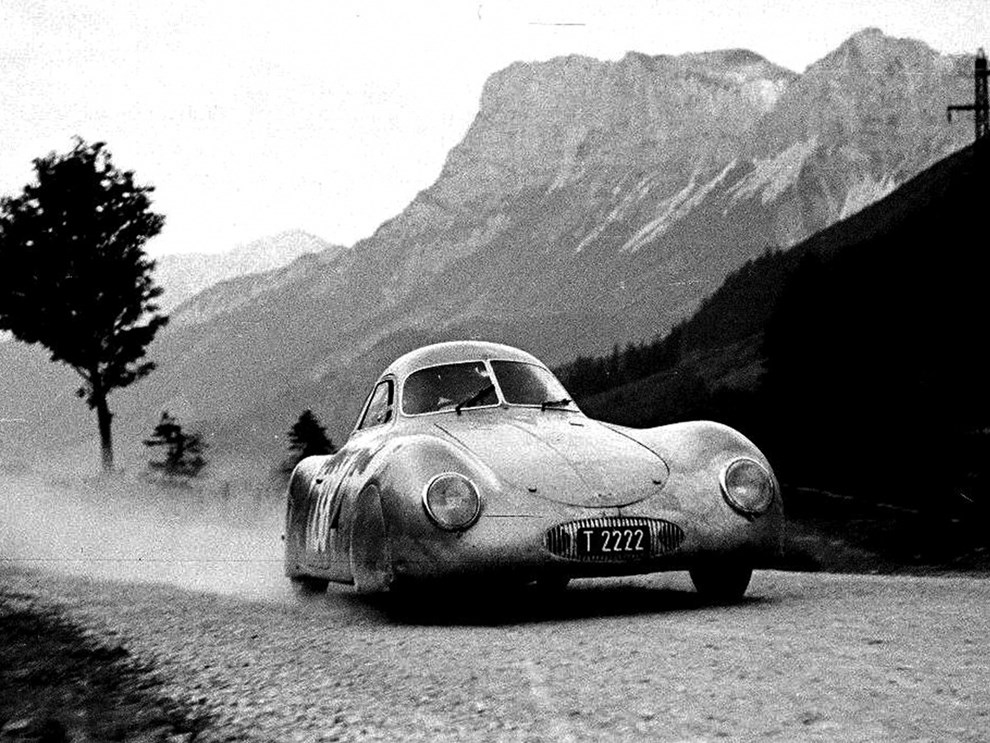
The descendants of the founding fathers of Heuer and Porsche ensured that their companies prospered. Ferdinand Porsche’s son, Ferry and then his son Butzi, propelled Porsche sports cars on to the racetrack and into the limelight. Jack Heuer, great-grandson of the founder, would also be pivotal in getting Heuer watches involved in the adrenaline-fuelled world of motorsports.
For many watchmaking and automotive experts, Jack Heuer is the father of motorsports sponsorship. Thanks to Jack Heuer’s inspired vision, it’s hard to think of any other watchmaking brand with the racetrack credentials of TAG Heuer. Chronograph watches go hand in hand with motorsports and one of Jack Heuer’s first moves, when he took over the helm of the company in 1962, was to produce a chronograph wristwatch version of the Autavia dashboard timers. In 1963, Heuer launched the Carrera chronograph with its elapsed-seconds scale on the flange (not on the dial). Its highly legible dial was designed for sports drivers while the name of the watch was deliberately chosen to evoke the world’s longest and most perilous rally/endurance race held in Mexico in the early 1950s: La Carrera Panamericana.
La Carrera Panamericana
Both Jack Heuer and Ferry Porsche were fascinated by La Carrera Panamericana. A far-away endurance race staged in Mexico, it would end up inspiring the name of Jack Heuer’s chronograph and the top-performing sports cars produced by Ferry and later his son, Butzi Porsche.
Carrera, which is the Spanish word for ‘race’ but also for ‘career’, worked perfectly for Heuer and Porsche. Not only does it capture the thrill of a race, but it also references the mileage that both brands have enjoyed, and continue to enjoy, with their respective Carreras.
La Carrera Panamericana was Mexico’s answer to the Mille Miglia, the Targa Florio or the 24 Hours of Le Mans. The longest race in the world, La Carrera Panamericana traversed Mexico from Ciudad Juárez on the border with the United States to Tuxtla Gutiérrez in the south. The gruelling rally covered over 3,000kms of the Pan-American highway and was held between 1950 and 1954 before being suspended for safety reasons. Attracting international recognition and famous drivers from around the globe, by the third edition in 1952 the race was opened to the category of sports cars, and Porsche sent two 356 GTs to compete.
In the 1954 edition of La Carrera Panamericana, a Porsche 550 Spyder finished third with Hans Herrmann at the wheel. Fitted with a high-performance DOHC, 1,498 cc four-cylinder boxer engine, the model proved its mettle on the tough Mexican highway. In honour of the race and the high-profile exposure obtained by the brand, Ferry Porsche reserved the name ‘Carrera’ for all his top-performing sports cars with the winning DOHC engine. Later on, the name Carrera will become associated with some top-performance versions of the 356 and, of course, the fastest versions of the 911s, including the mythical Carrera RS 2.7L.
Jack Heuer got wind of the race in 1962 while attending the 12 Hours of Sebring. There he met Pedro and Ricardo Rodríguez, two talented Mexican drivers who described the hardships and dangers of the perilous Mexican Carrera Panamericana. In Jack Heuer’s words: “Hearing them talk about La Carrera with Juan Manuel Fangio, an old friend of the brand who won the competition in 1953, I let my imagination run wild. The name itself sounded elegant, dynamic, easy to pronounce in all languages, and charged with emotion. Then I knew that my new chronograph was the perfect tribute to that legend: CARRERA.”
La Carrera Panamericana was revived in 1988 and is scheduled to take place in mid-October (15-22) this year. Celebrating its 70th anniversary, the 2021 edition will feature 80 classic cars manufactured between 1940 and 1972 covering the 3,200km race over seven days of competition. If you visit the official webpage, you’ll see TAG Heuer’s presence in the countdown timer to the race.
Close encounters of the fast kind
But for Jack Heuer it wasn’t just about producing watches inspired by the race track, it was also about getting the watches on to the race track. In 1969, Jack Heuer signed Swiss Formula 1 driver Jo Siffert as a brand ambassador, the first in a long and distinguished line of drivers. By sponsoring Siffert – who had won the British Grand Prix in July 1968 – Heuer opened the doors of Formula 1, a phenomenal world-class stage to raise brand awareness.
When Steve McQueen embarked on the Le Mans movie in 1970, he invited Siffert as his technical consultant to teach him how to drive the Gulf Team Porsche 917K for the film. Incidentally, 1970 marked Porsche’s first victory at Le Mans with a 917K and from 1968-1970 Porsche secured three consecutive titles with its 911 model at the Monte Carlo Rally. To make the onscreen race as realistic as possible, McQueen wore the same overalls as Siffert and even his Monaco watch. Needless to say, the square-shaped Monaco of 1969, the world’s first automatic chronograph, which hadn’t been met with wild enthusiasm at first, was catapulted into stardom. In December 2020, Phillips sold the Monaco watch worn by Steve McQueen in Le Mans for USD 2 million, the most expensive Heuer watch ever sold at auction.
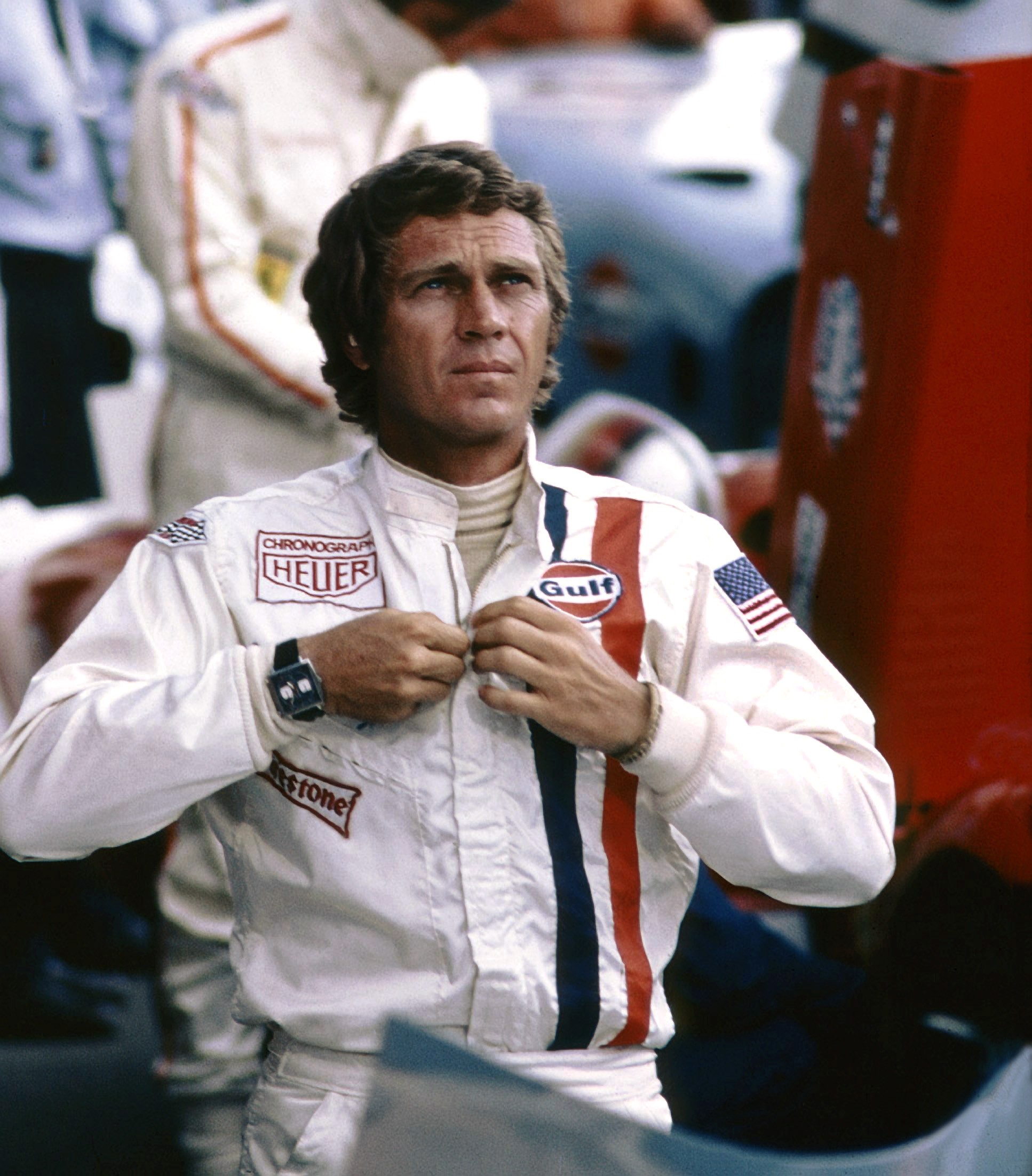
Following the sale of Heuer to the TAG Group in the mid-1980s, there was another close encounter between the two brands. The jointly developed and produced TAG-Porsche Turbo engine enabled the McLaren to win three consecutive F1 world titles with Niki Lauda in 1984 followed by Alain Prost in 1985 and 1986.
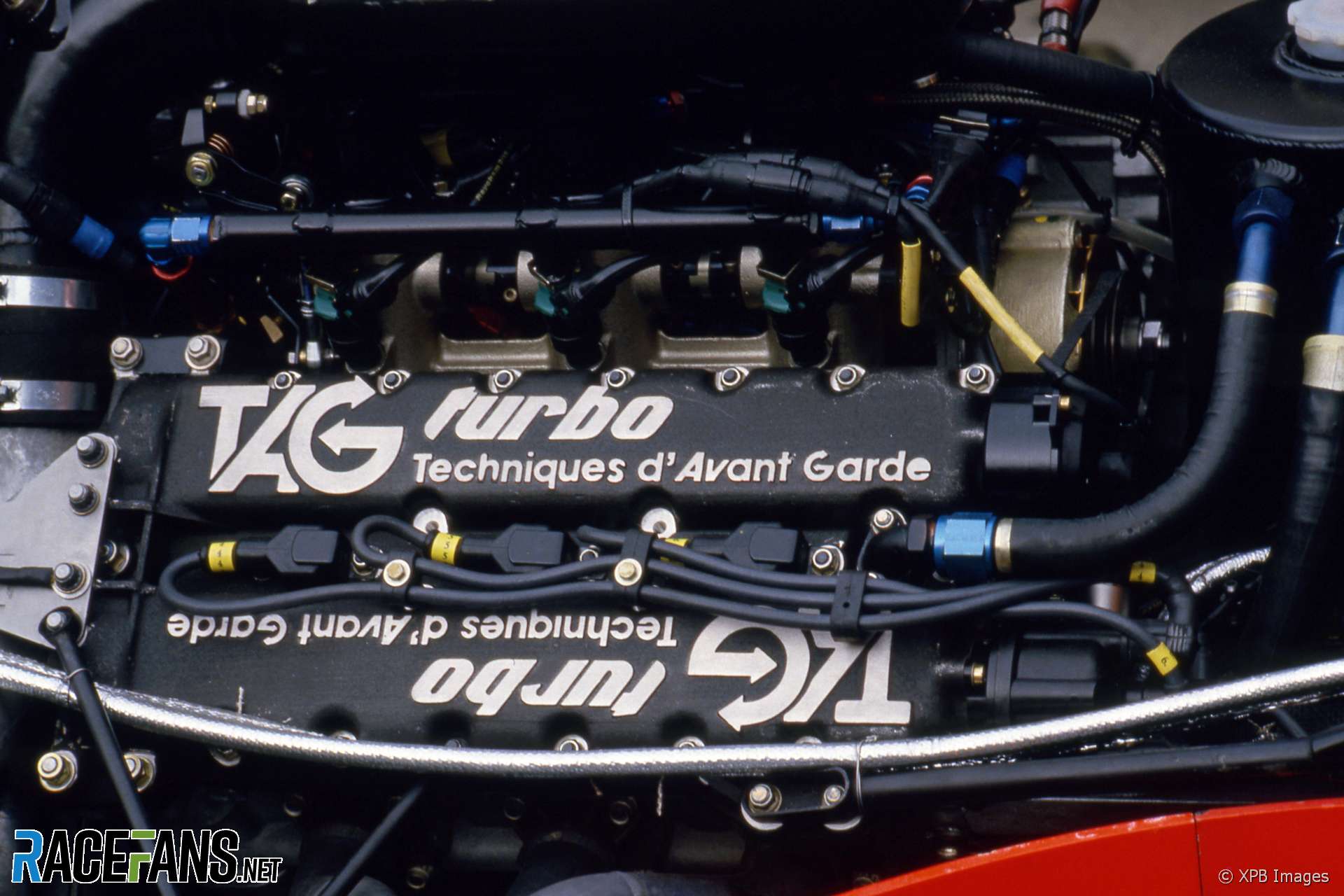
In 2019, the two brands forged an even deeper alliance putting together the TAG Heuer Porsche Formula E Team to participate in the FIA Formula E championship for electric cars. The TAG Heuer Porsche Formula E Team set a milestone at the opener in Diriyah (SA) in November 2019, when André Lotterer crossed the finish line in second place. In its second year, the latest all-electric race car, the 99X Electric, will be driven by André Lotterer and his new teammate, Pascal Wehrlein.
TAG Heuer Carrera Porsche Chronograph
Modelled on the 44mm Carrera Sport Chronograph launched in 2020, this celebratory watch fuses attributes of both brands without diluting the essence of either. Launched in four versions last year, the Carrera Sport Chronograph is a contemporary take on the classic Carrera. The stainless steel cases are designed to be more ergonomic and compact, and they are fitted with in-house Calibre Heuer 02 with its robust 80-hour power reserve.
Starting with the black ceramic bezel, the name Porsche is picked out in bright red, as is the indented area of the crown. Like the original Carrera, the pushers are piston-style, the crown is unprotected, and the lugs are faceted but shortened for greater comfort. Even with the unprotected crown and sapphire crystal caseback, the chronograph is water-resistant to 100 metres. The gritty grey surface of the dial looks like the asphalt of racing courses while the applied black gold-plated Arabic numerals use the same font as the dashboard counters of Porsche sports cars.
The asphalt background hosts three registers; two for the chronograph functions and a smaller one at 6 o’clock for the small seconds and date. The interior of the black chronograph counters are snailed and feature bright red markings and red-tipped hands to match the red-tipped hand of the central chronograph seconds. To ensure accurate readings in poor light conditions, the numerals and the rhodium-plated hour and minute hands are treated with white Super-LumiNova.
The sapphire crystal caseback reveals the performance-driven Heuer 02, TAG Heuer’s in-house chronograph movement with a robust power supply of 80 hours. A modern calibre with integrated architecture, Heuer 02 has a column wheel and vertical clutch to ensure a smooth and accurate run of the chronograph. Another detail to celebrate the alliance is the adaptation of the rotor to look like the steering wheel of a Porsche 911.
The TAG Heuer Carrera Porsche Chronograph 44mm is available on an integrated steel bracelet or a soft calf leather strap with beige stitching. It is a special edition though not a limited edition and comes in a special box with a black travel pouch with a red Porsche interior. The model with an integrated steel bracelet retails for EUR 5,700, the leather version for EUR 5,550.
For more information and orders, please visit www.tagheuer.com.

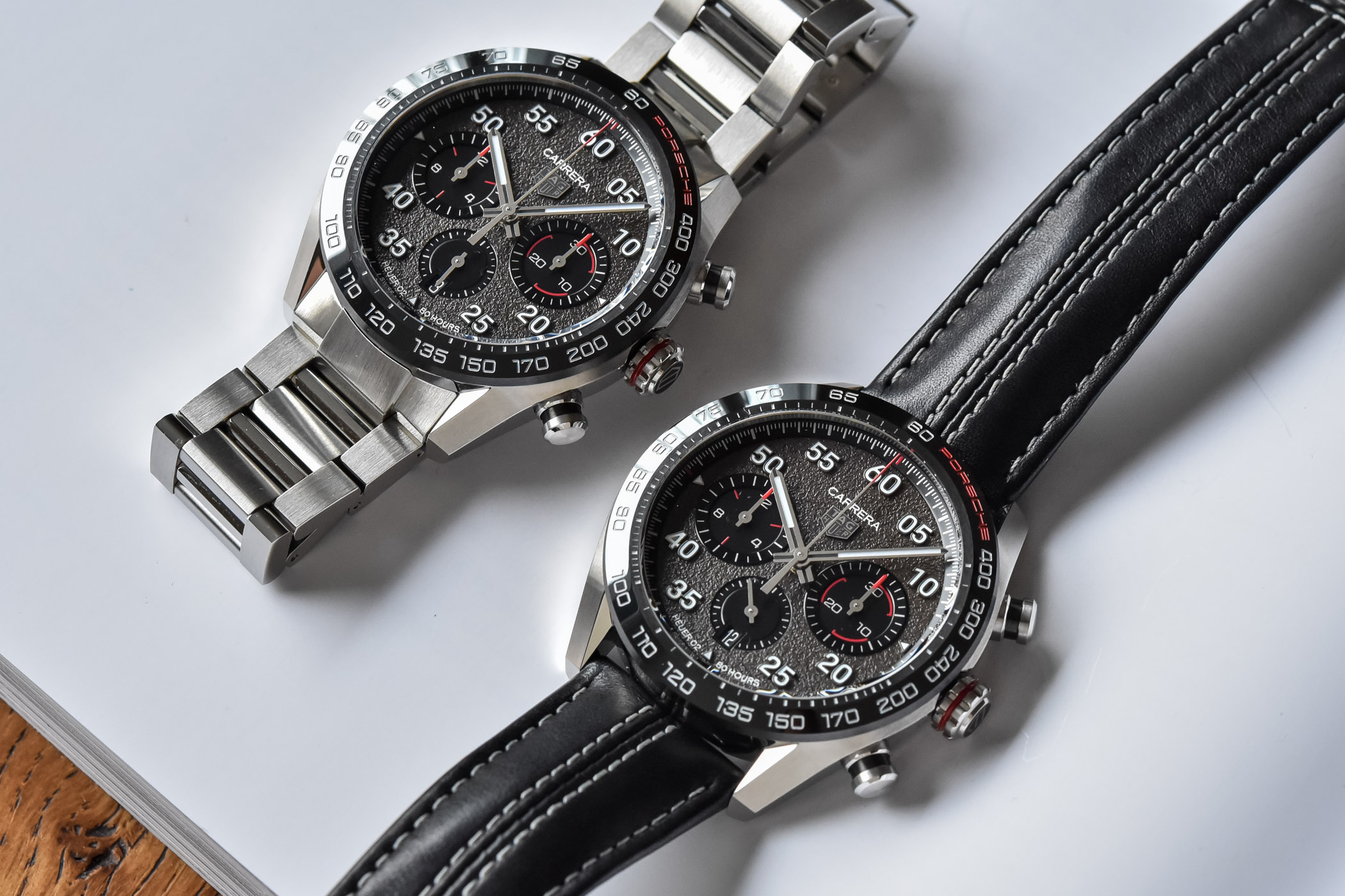
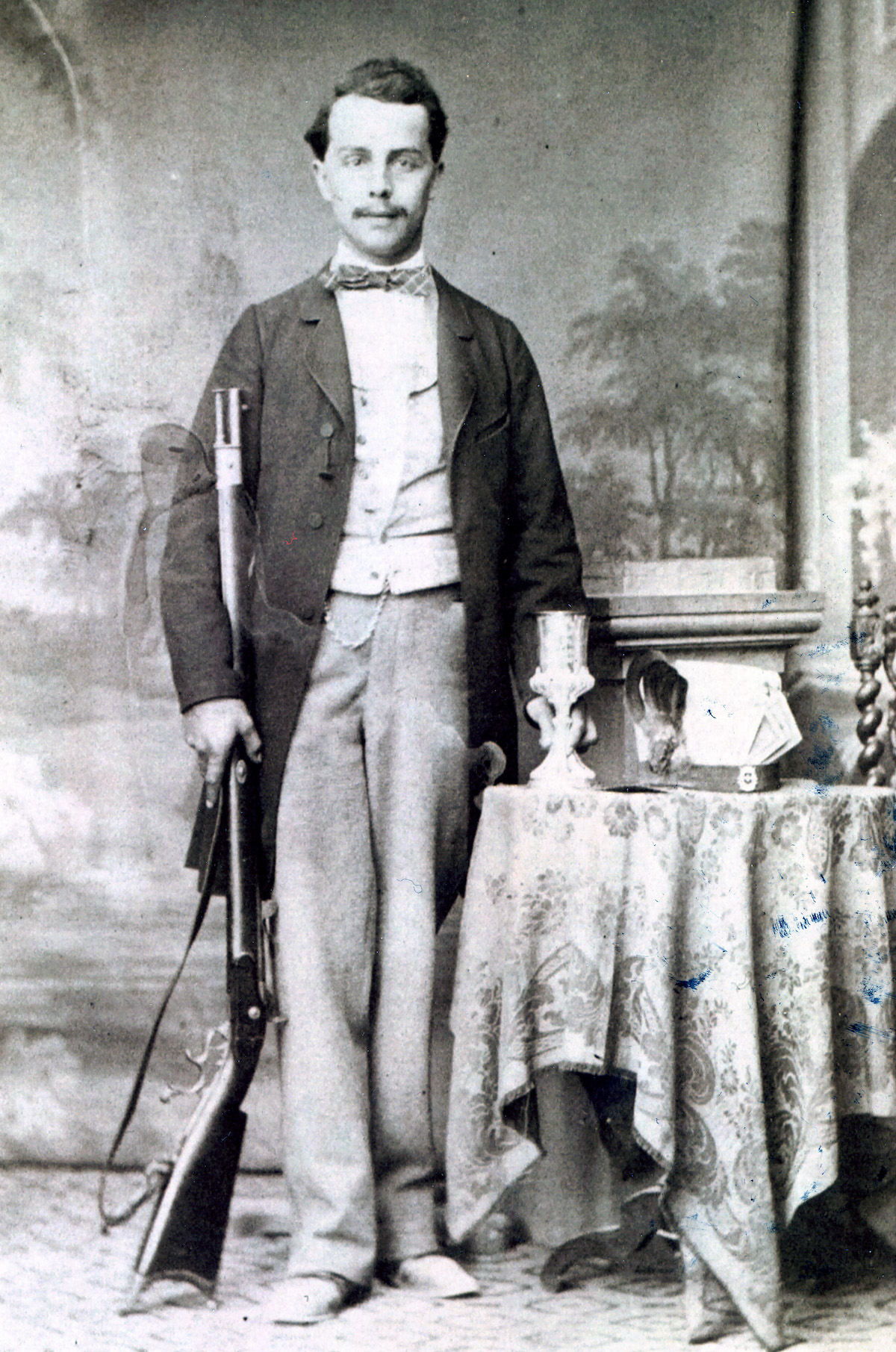
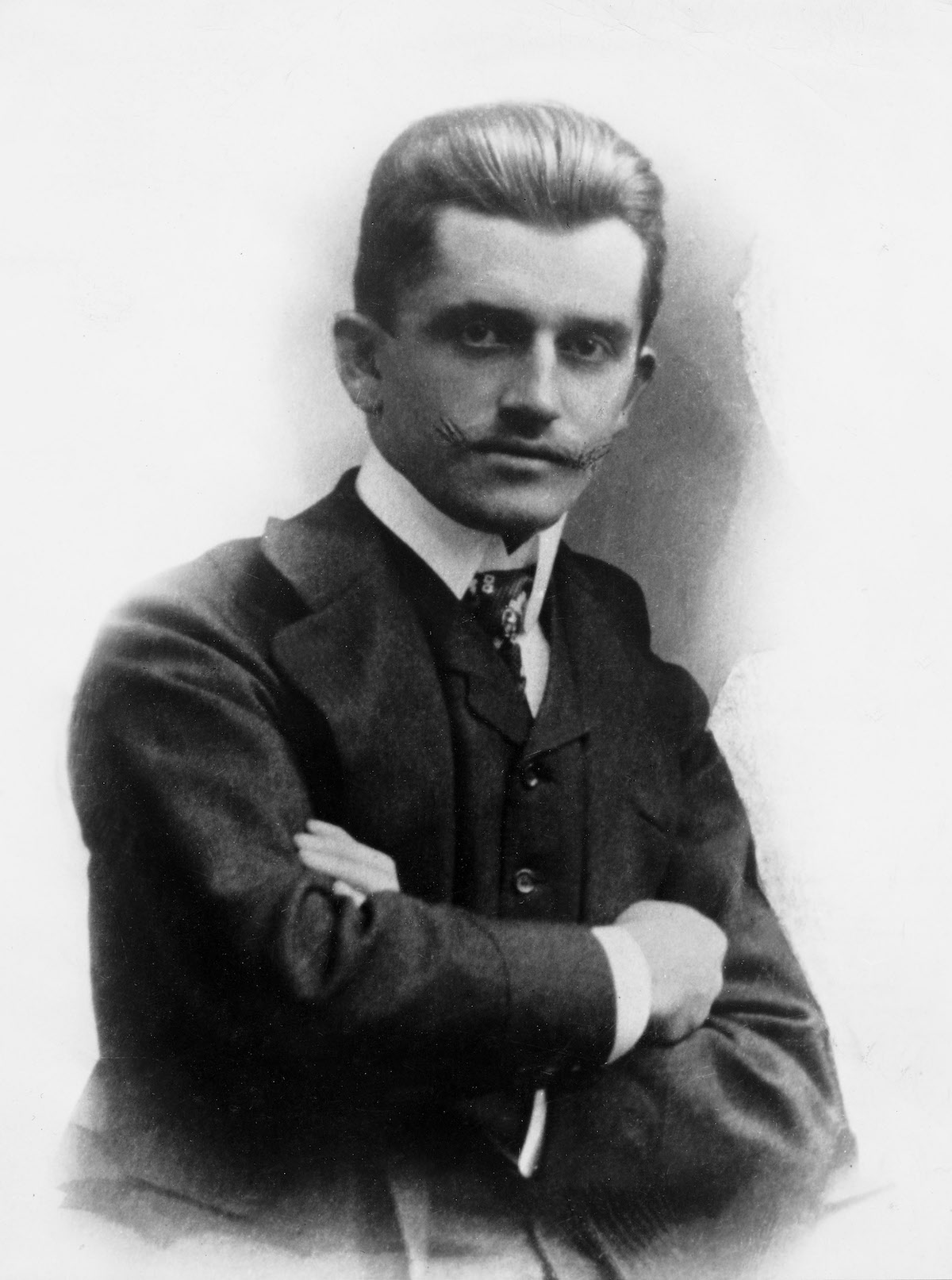
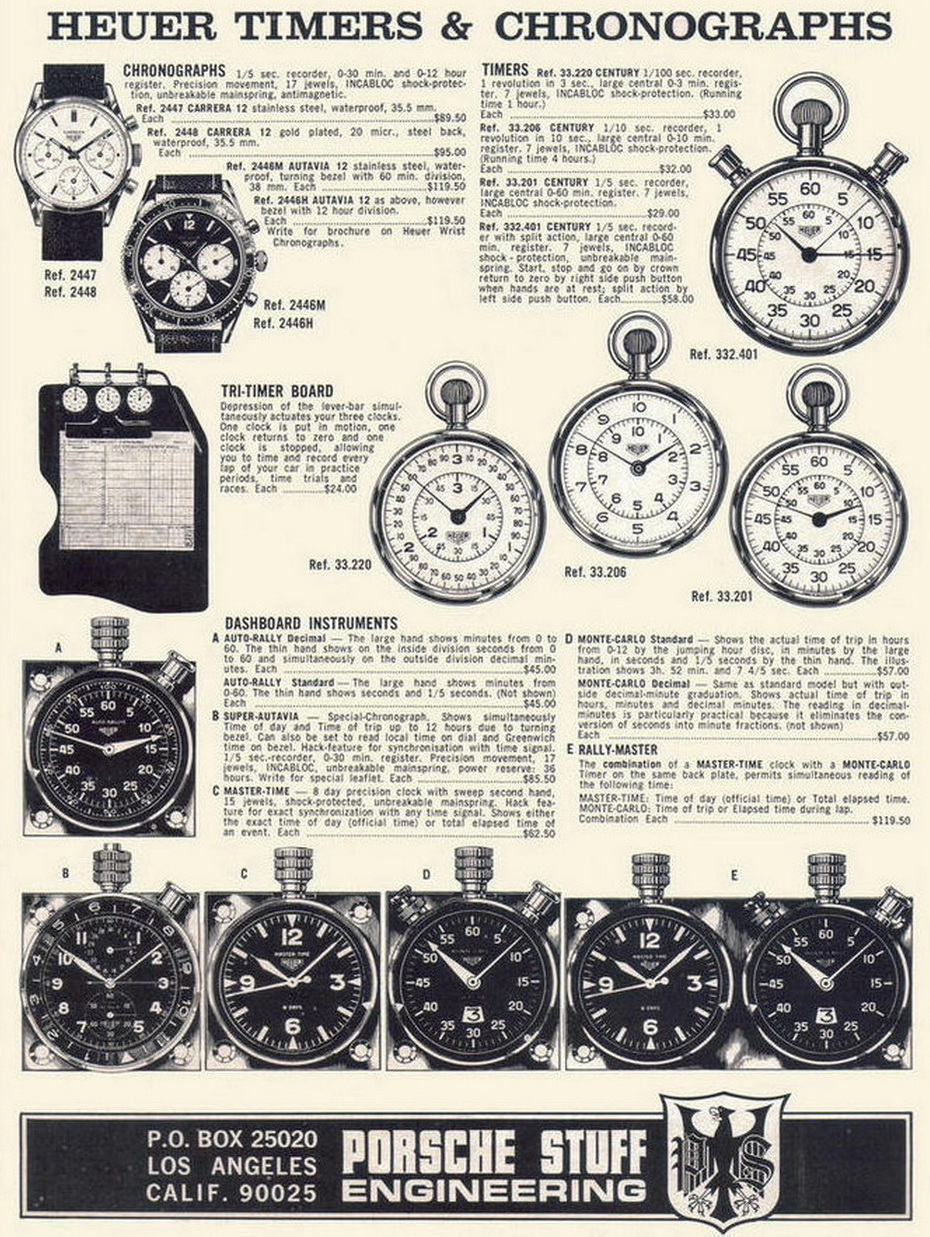
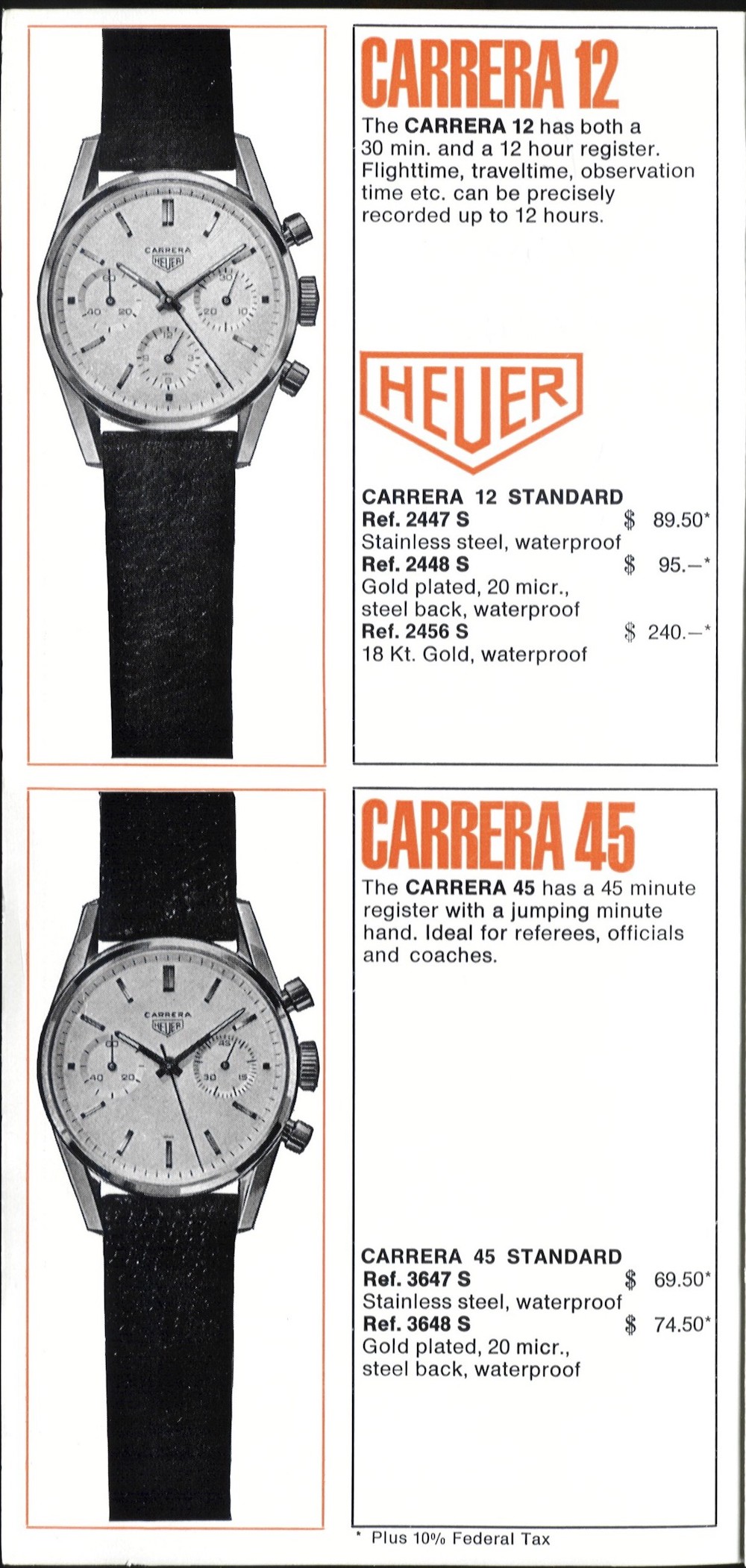
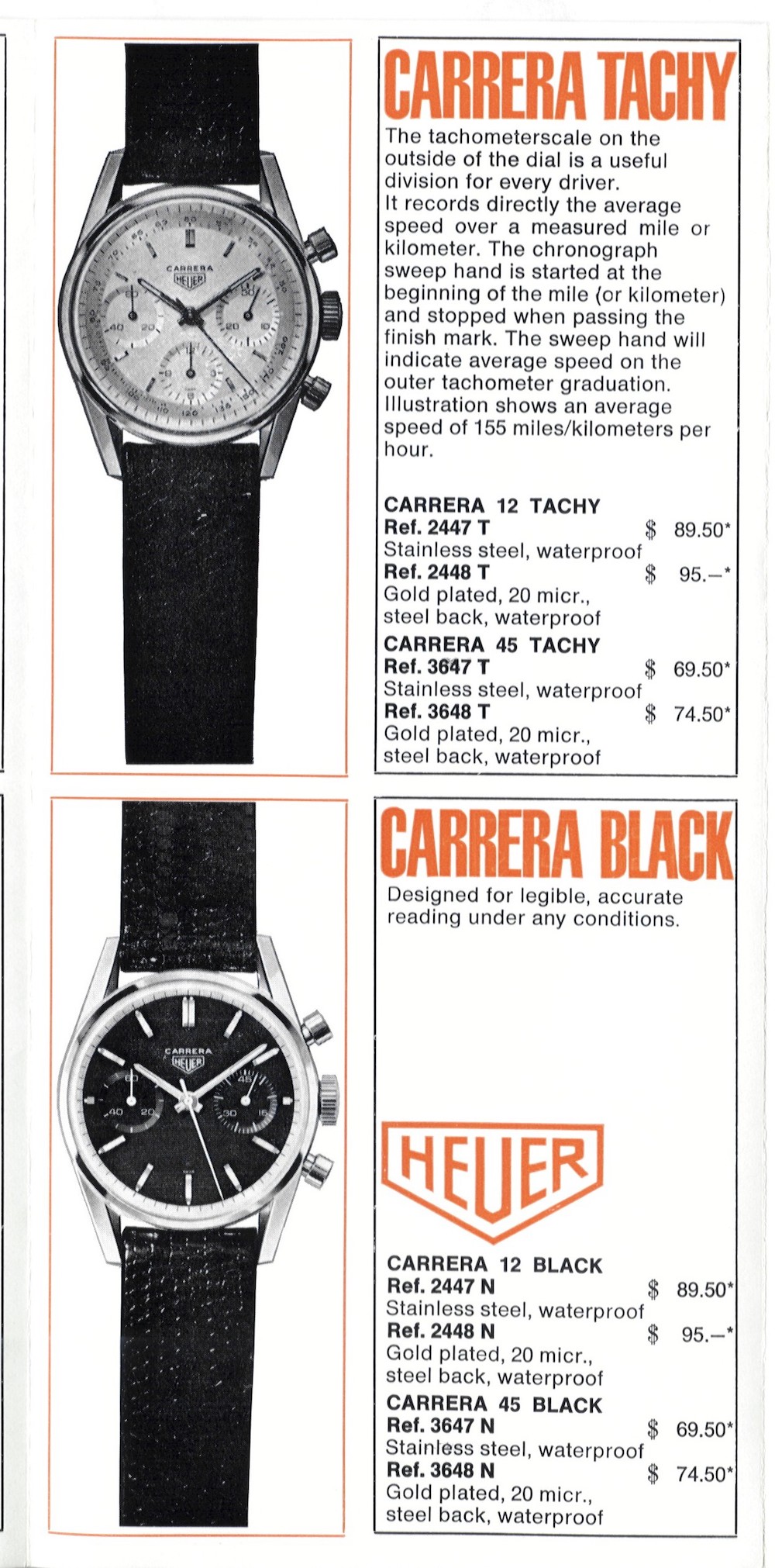
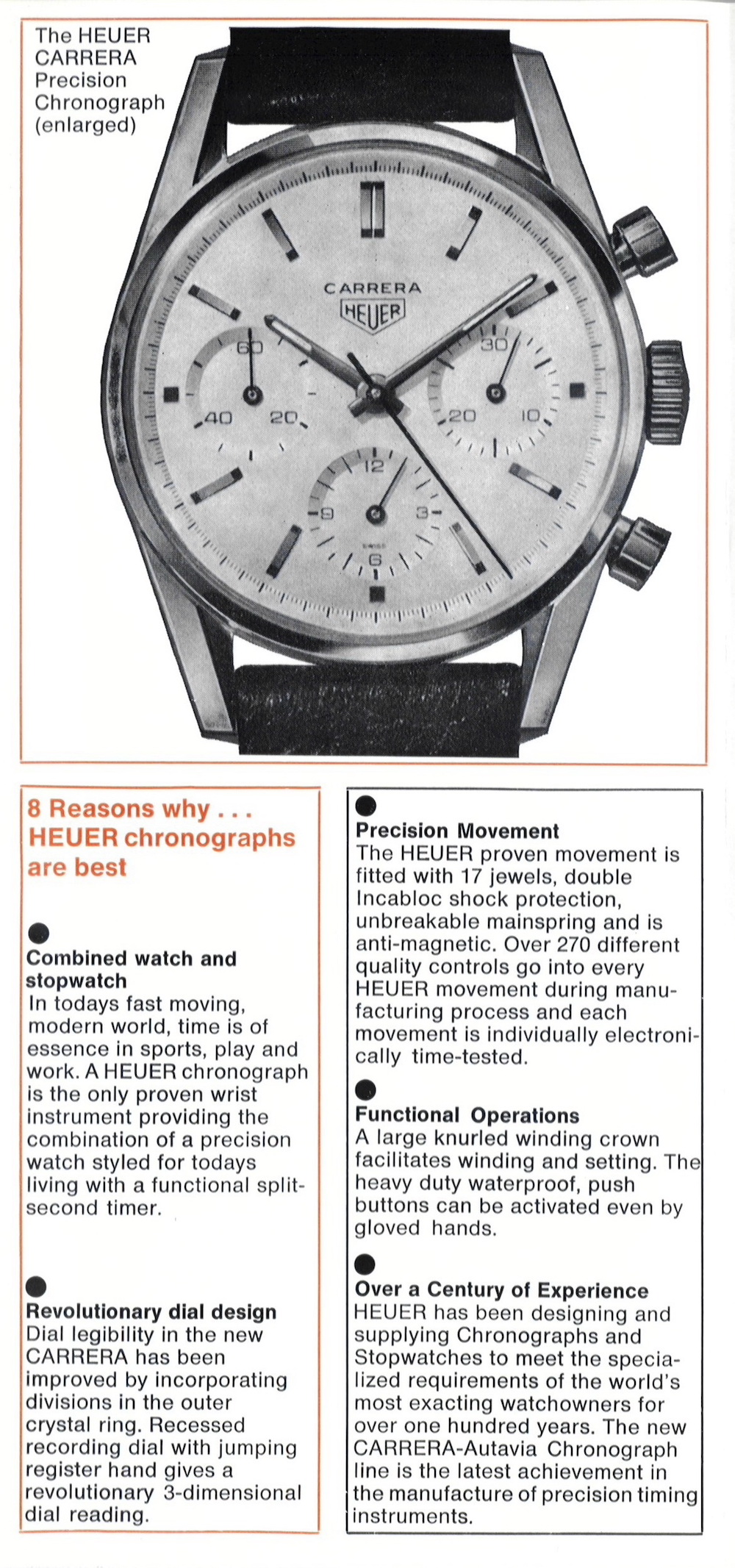
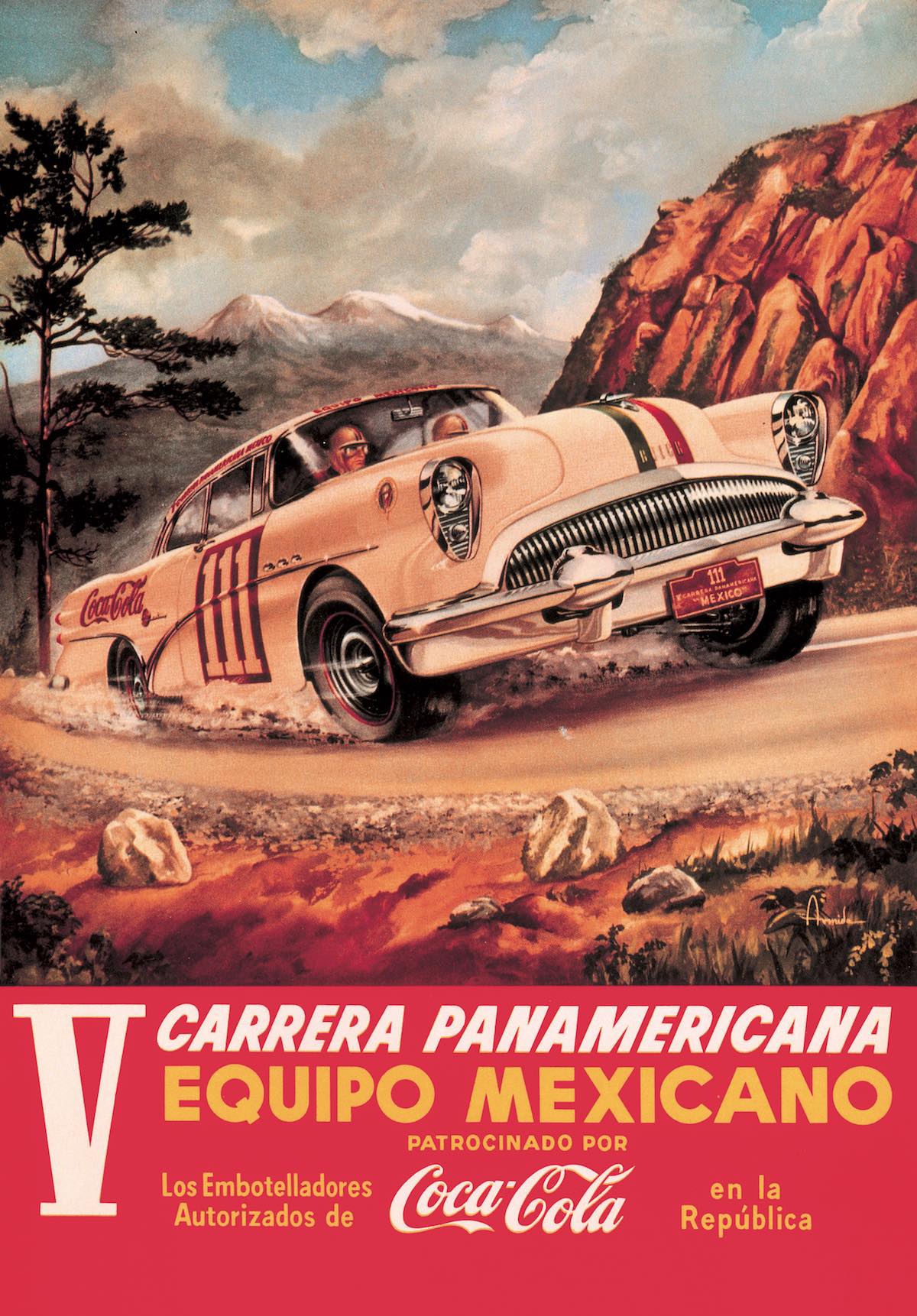
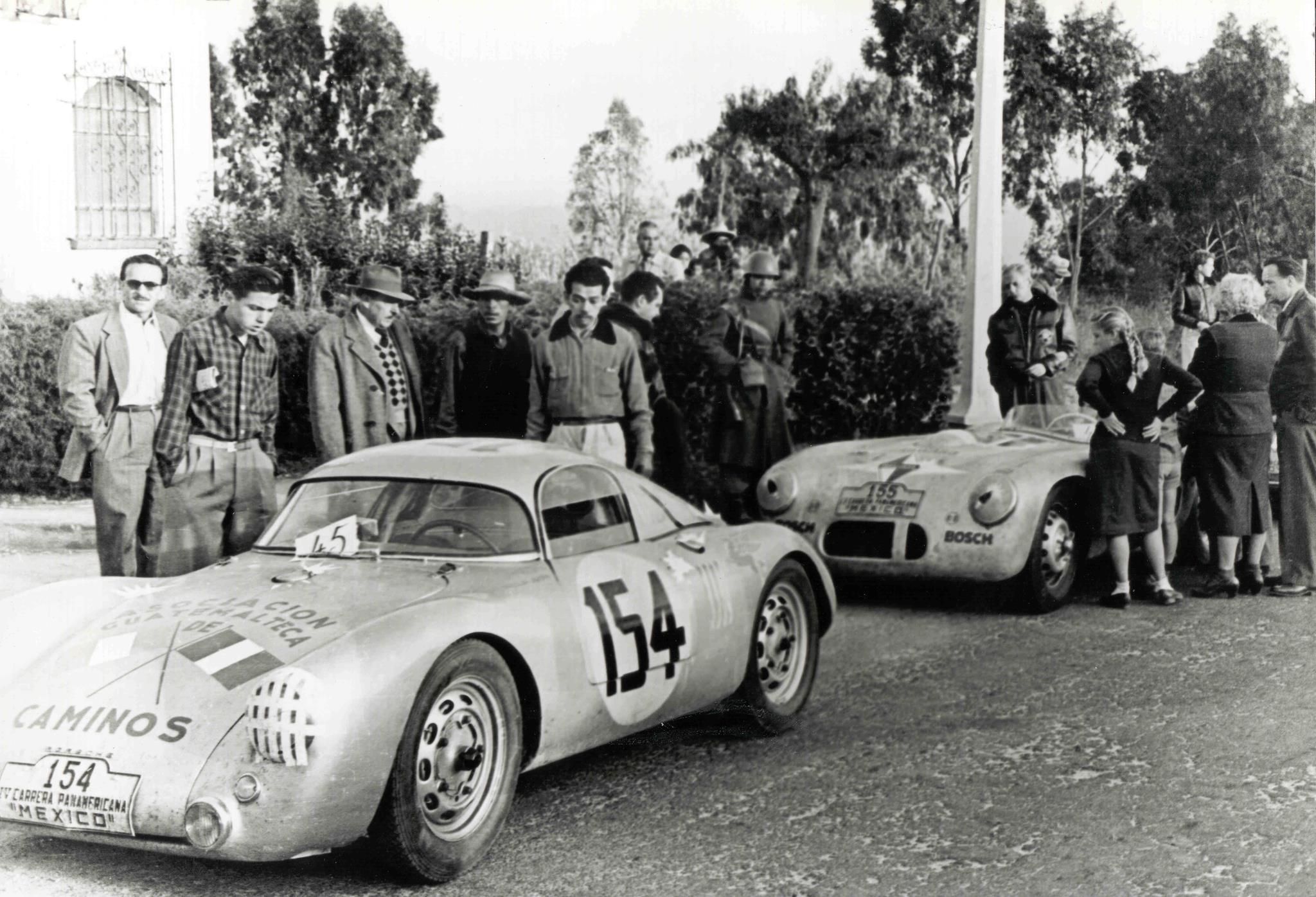
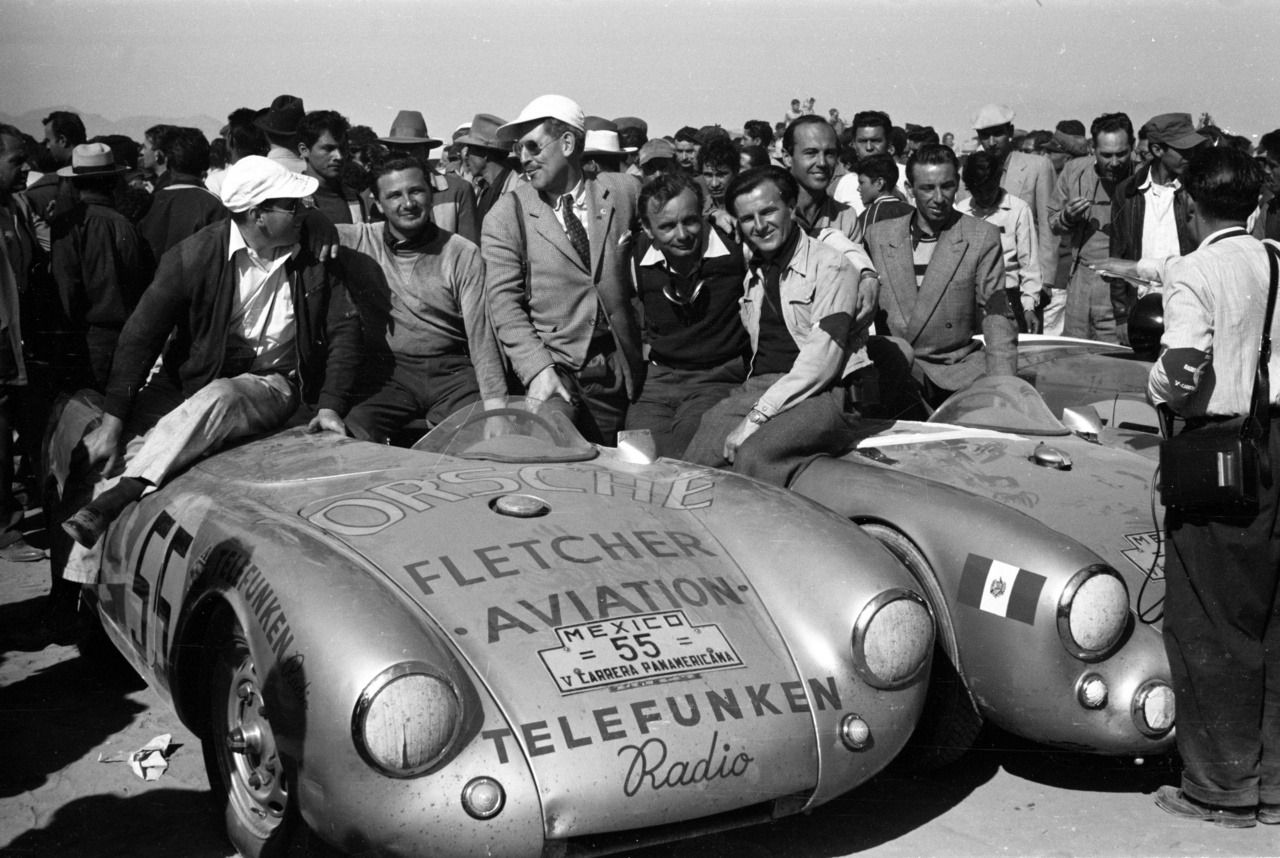
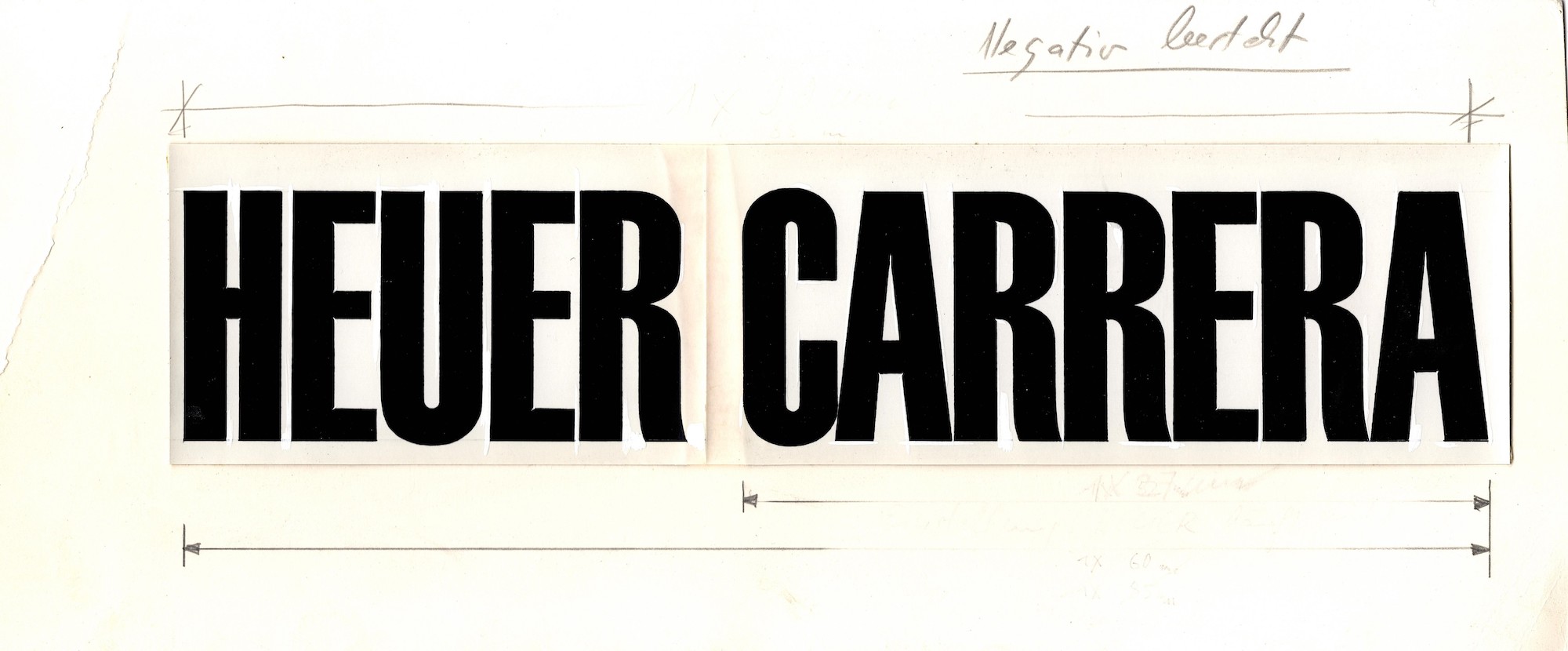
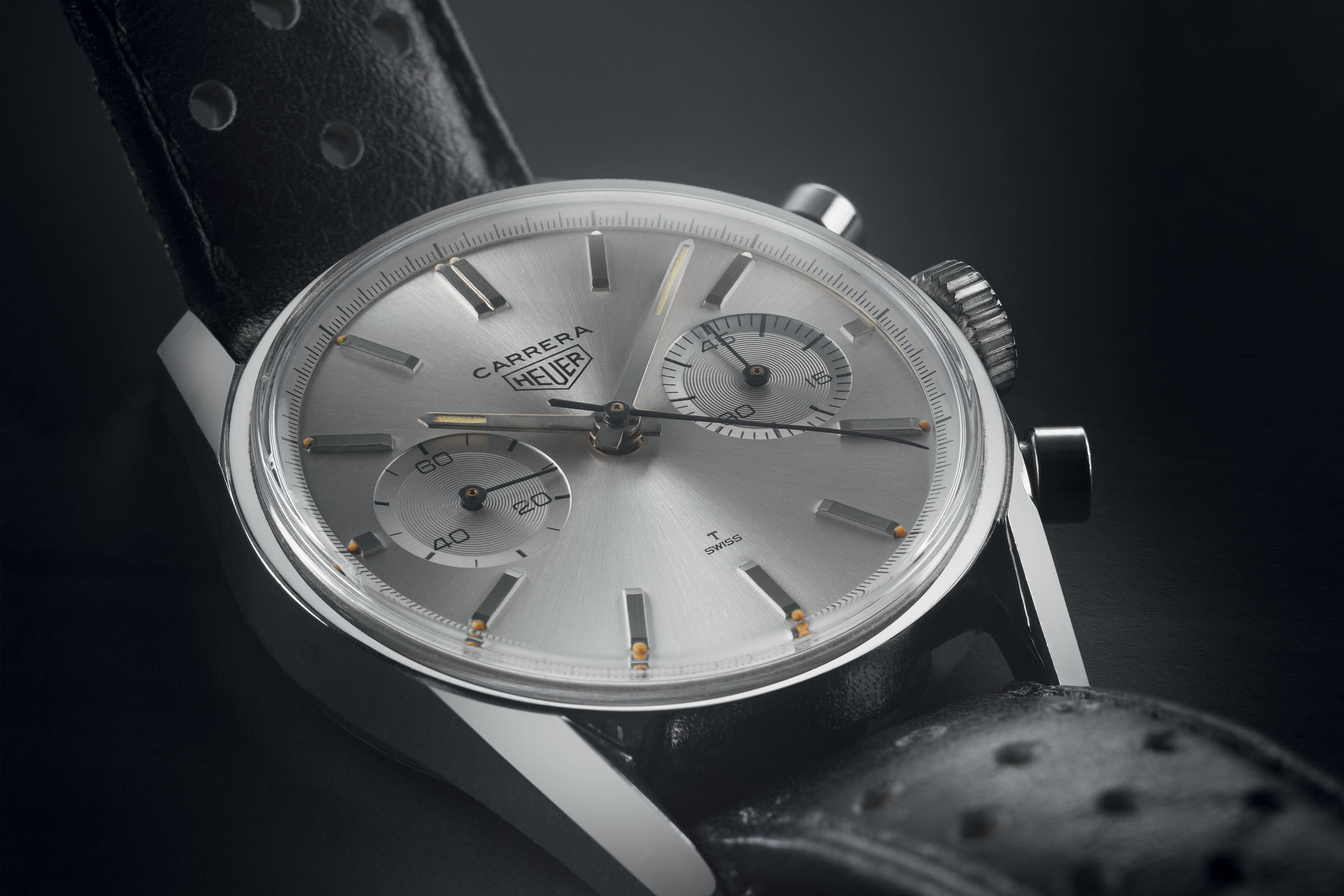
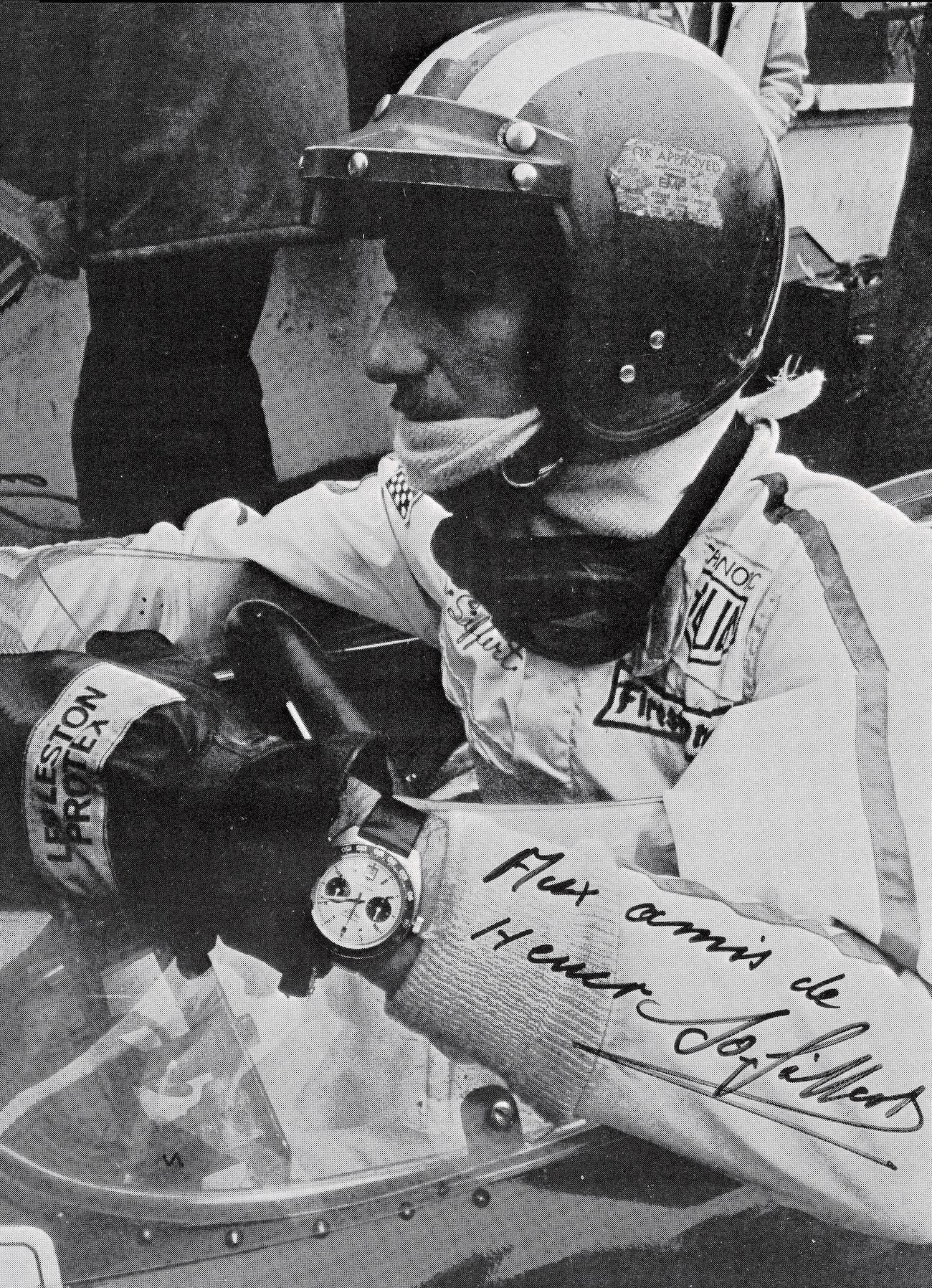

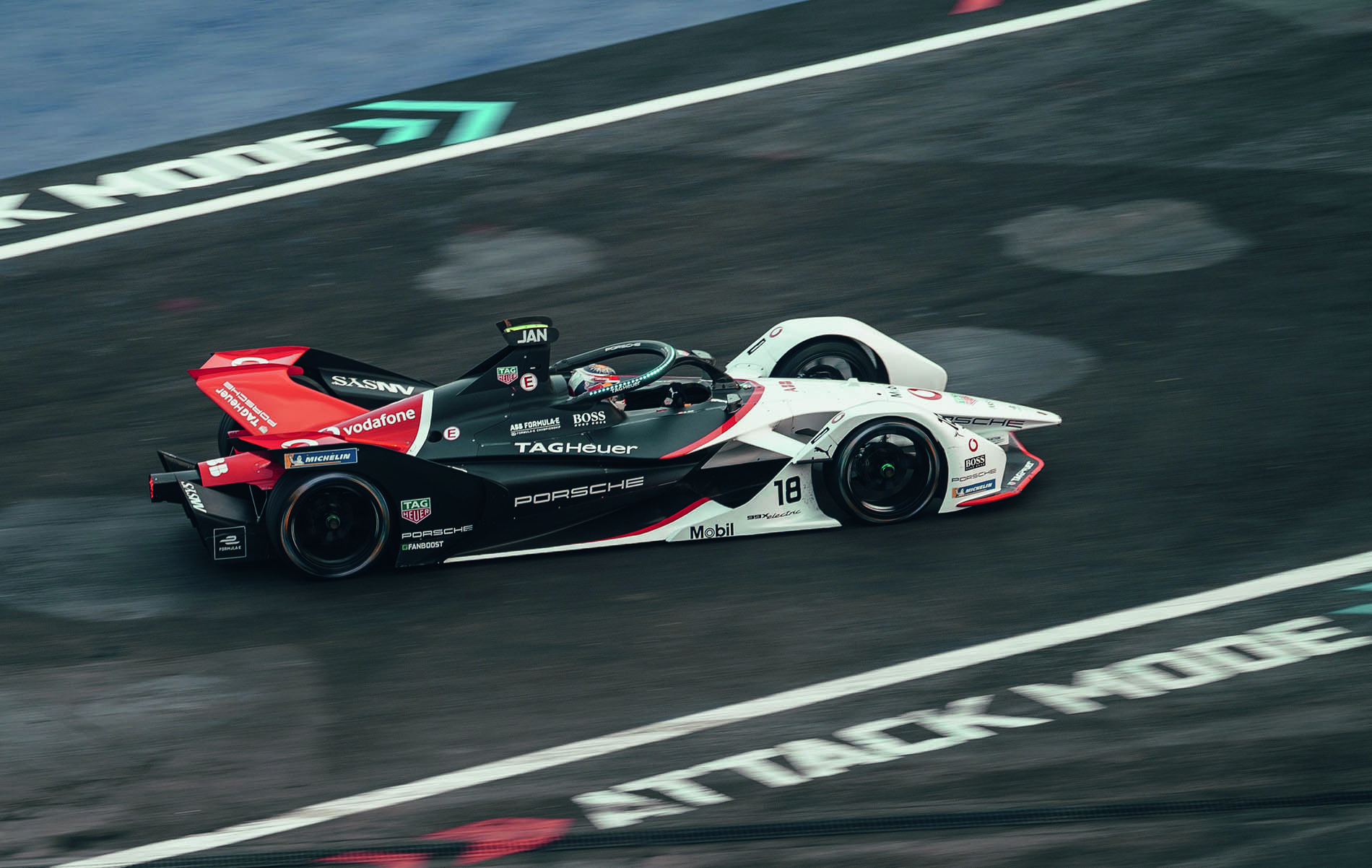
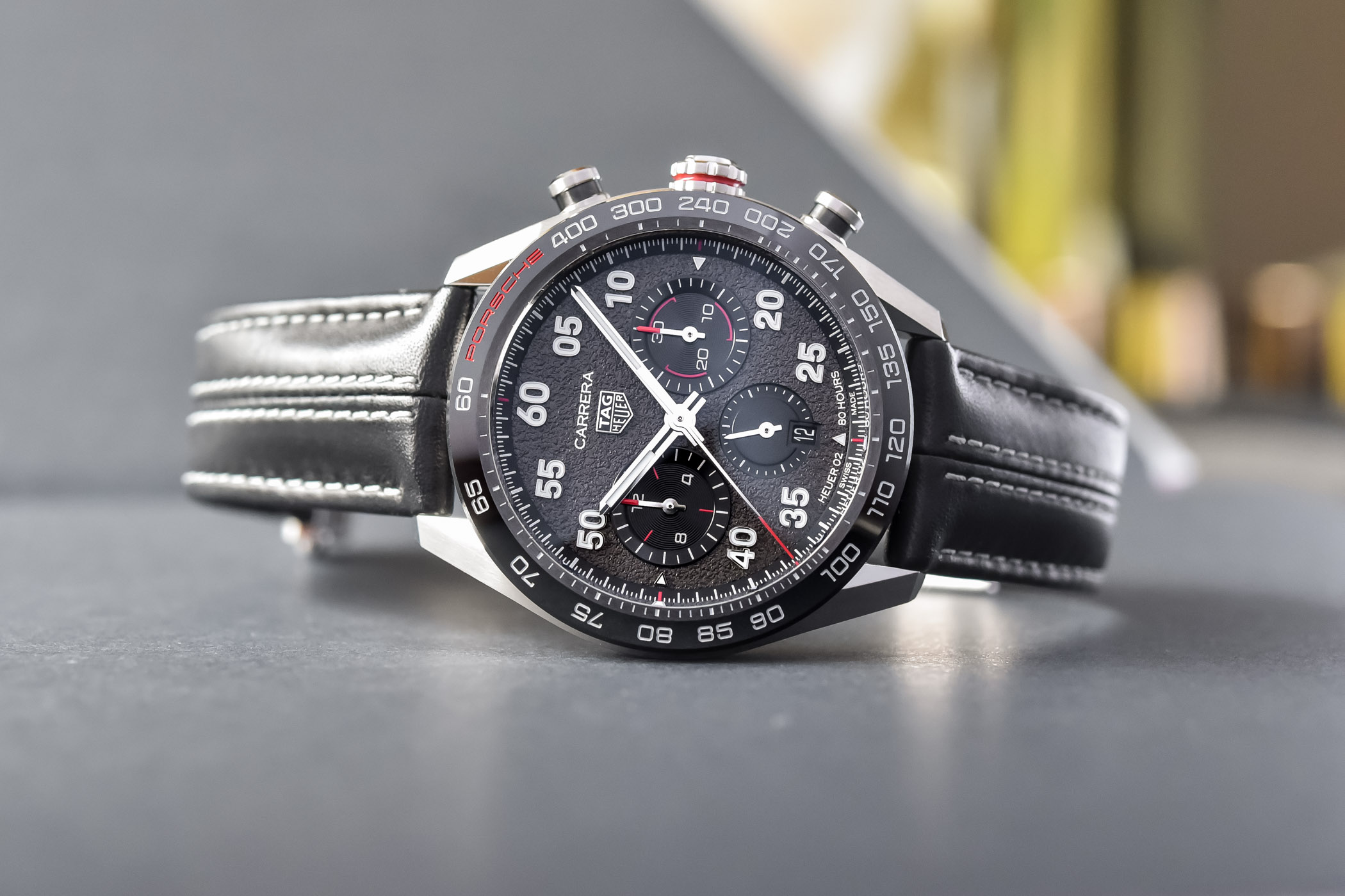
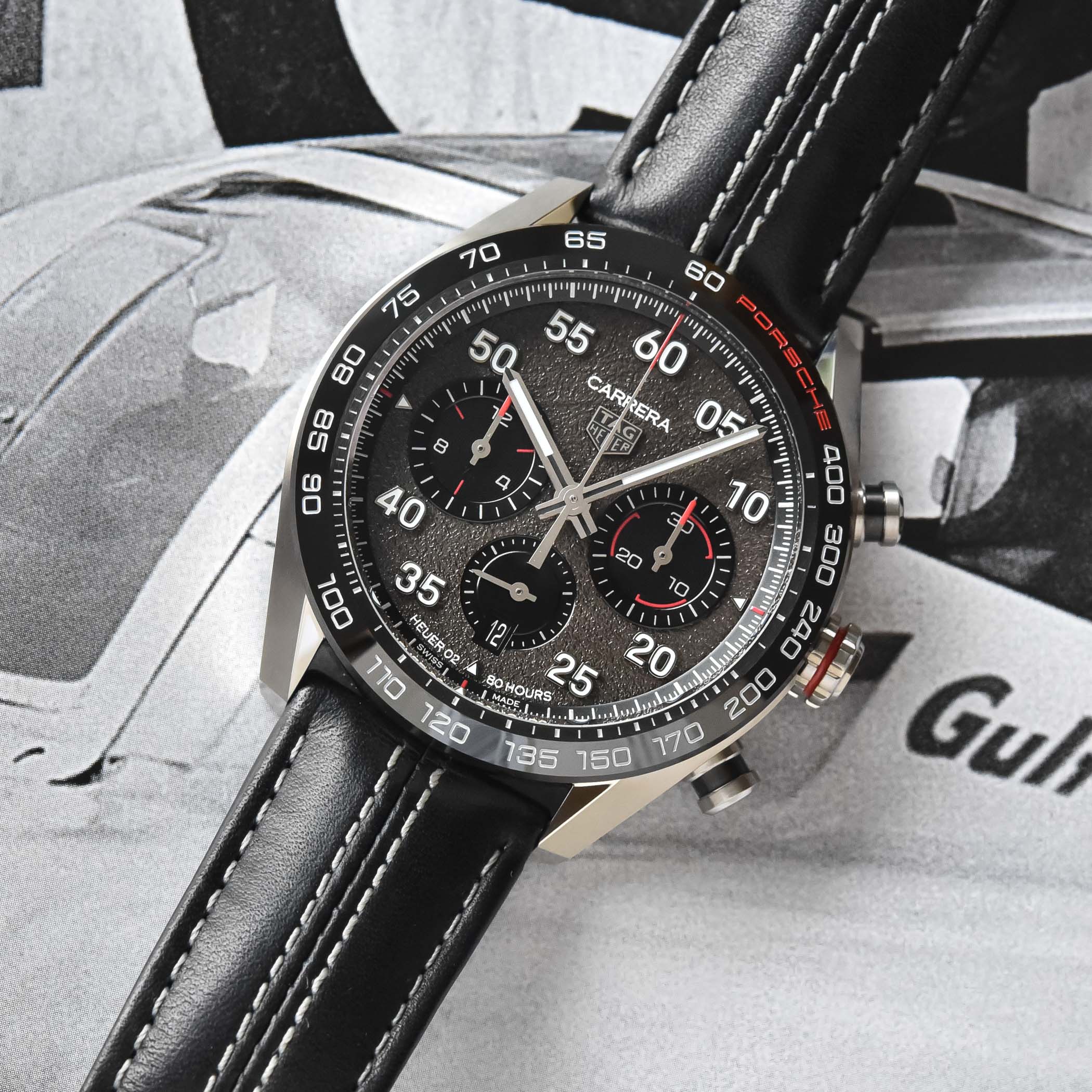
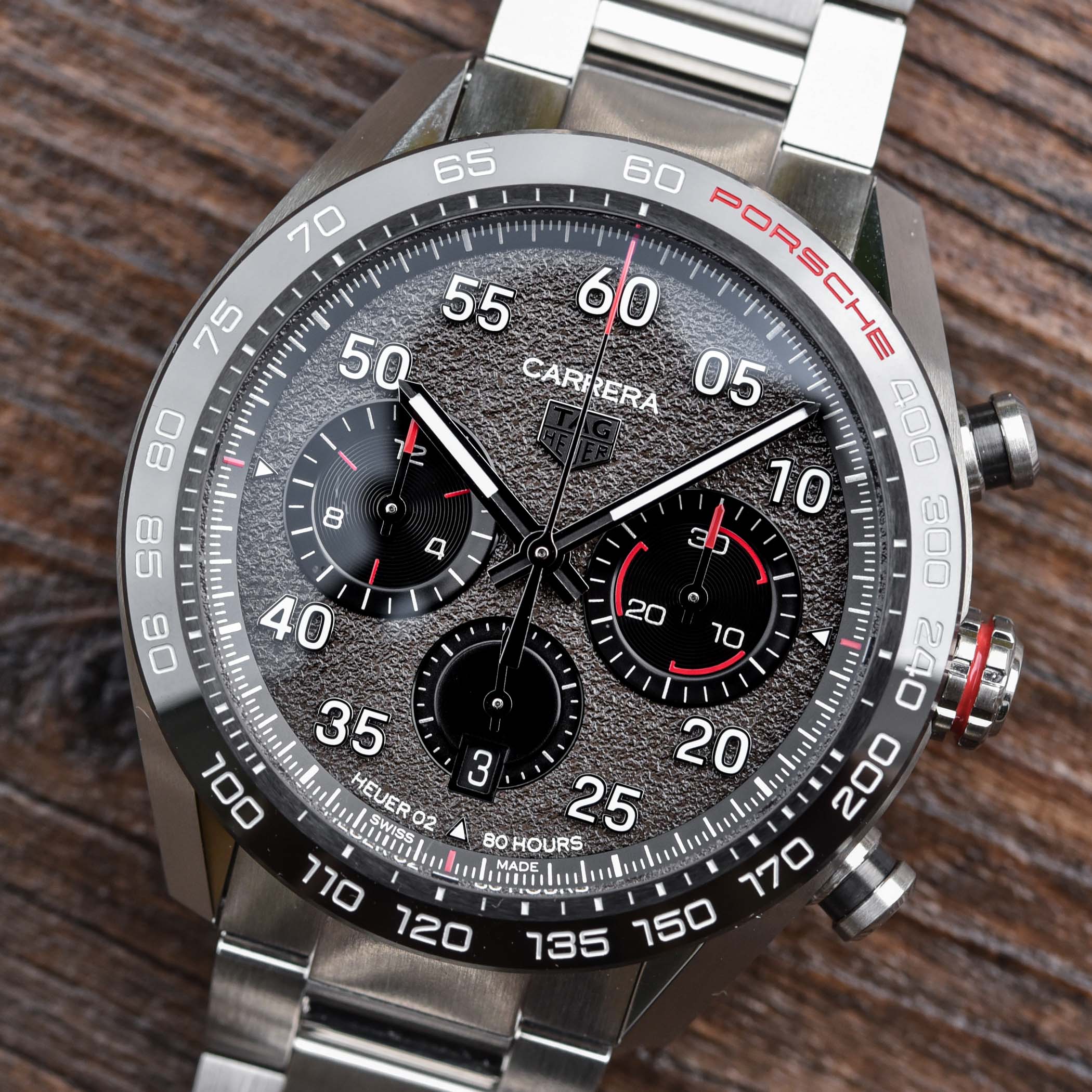

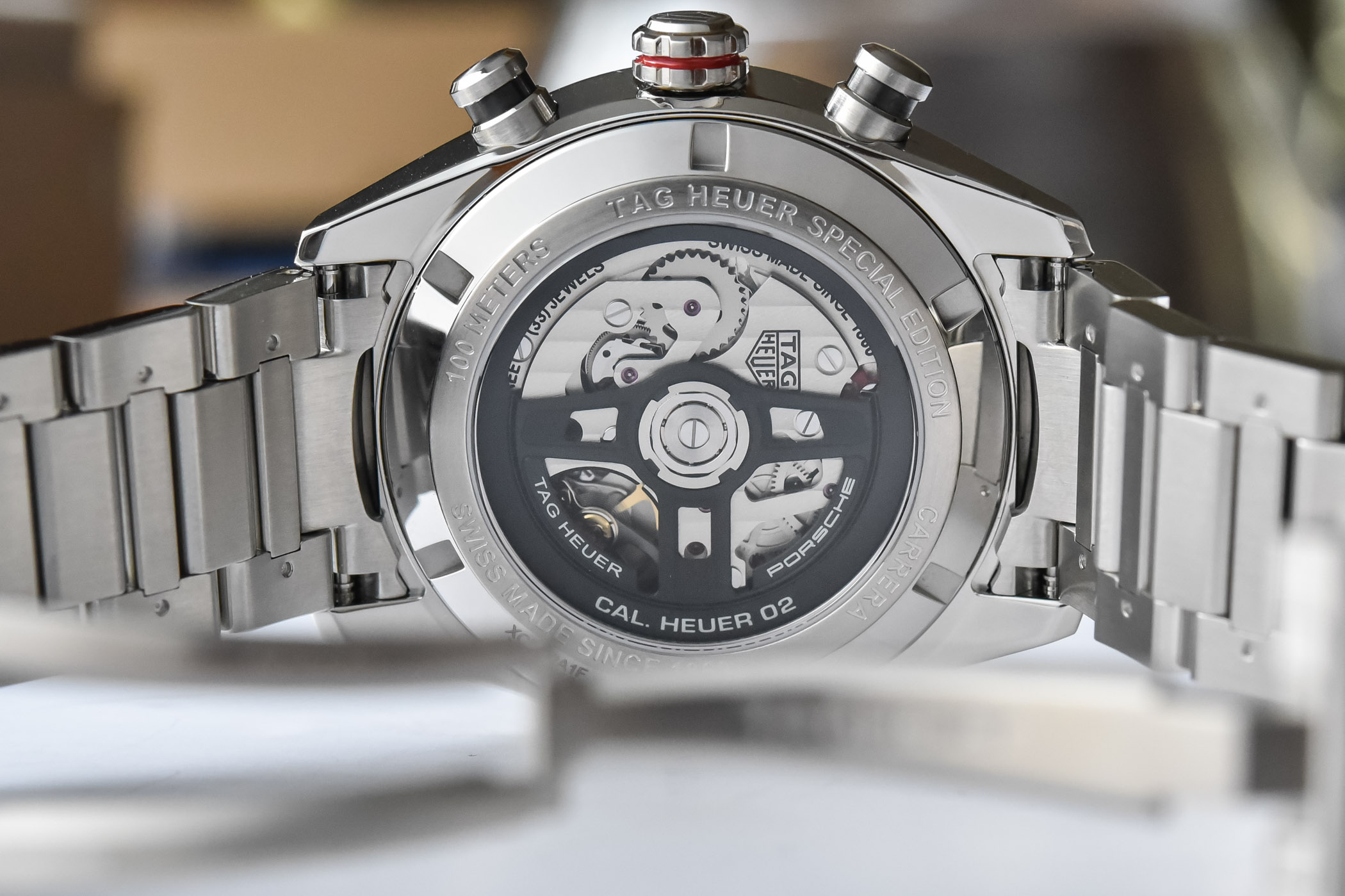
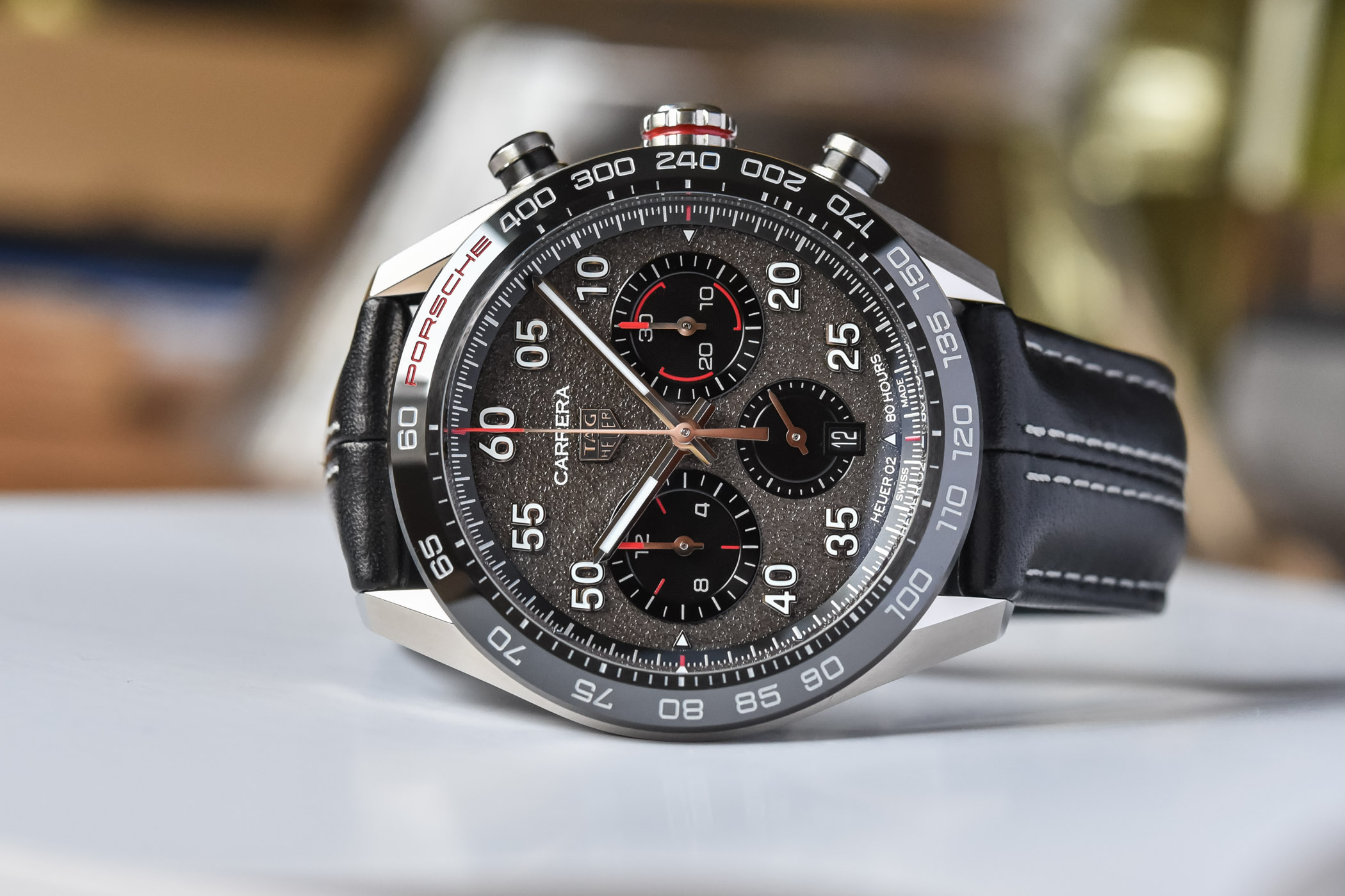
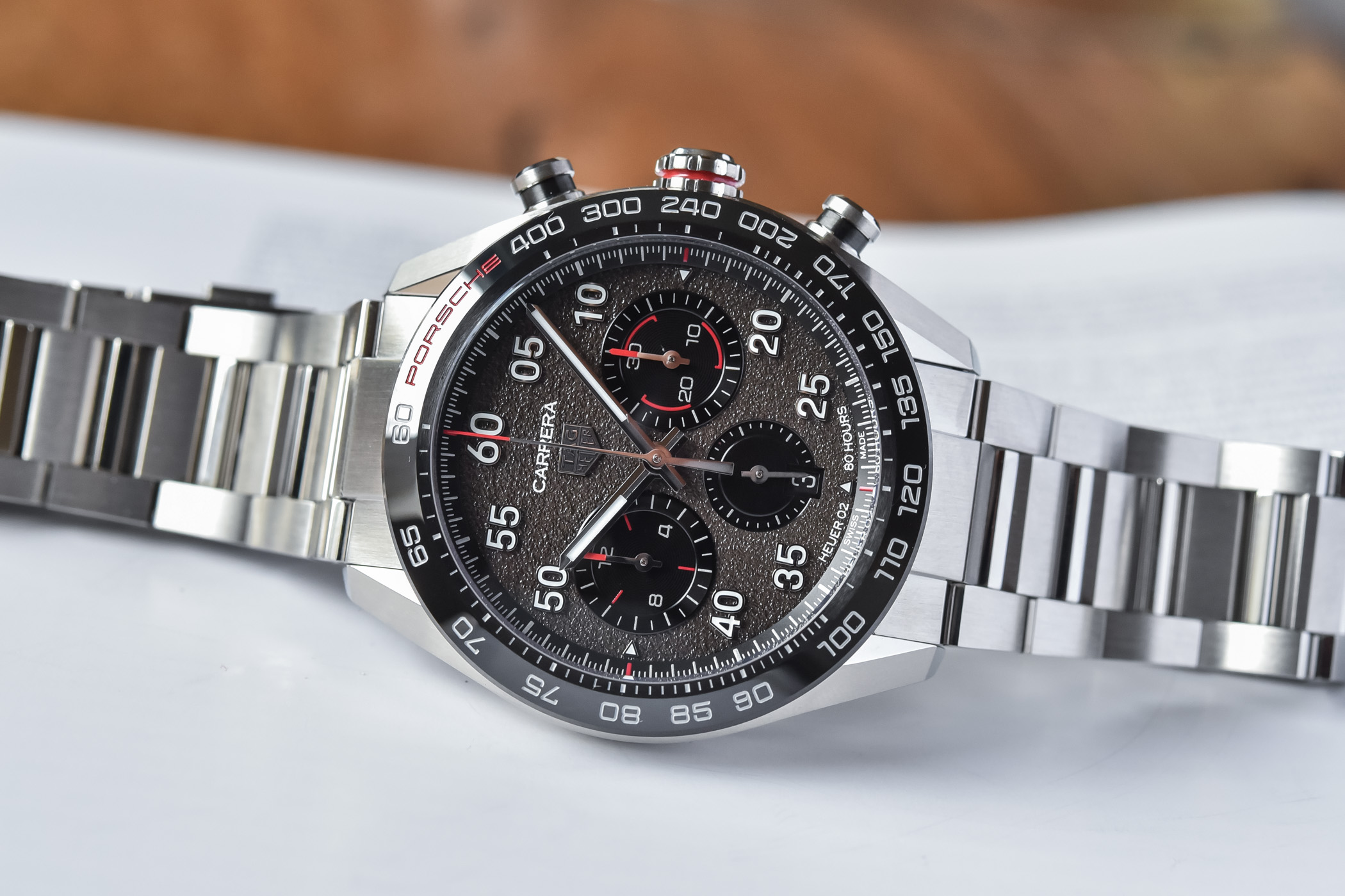
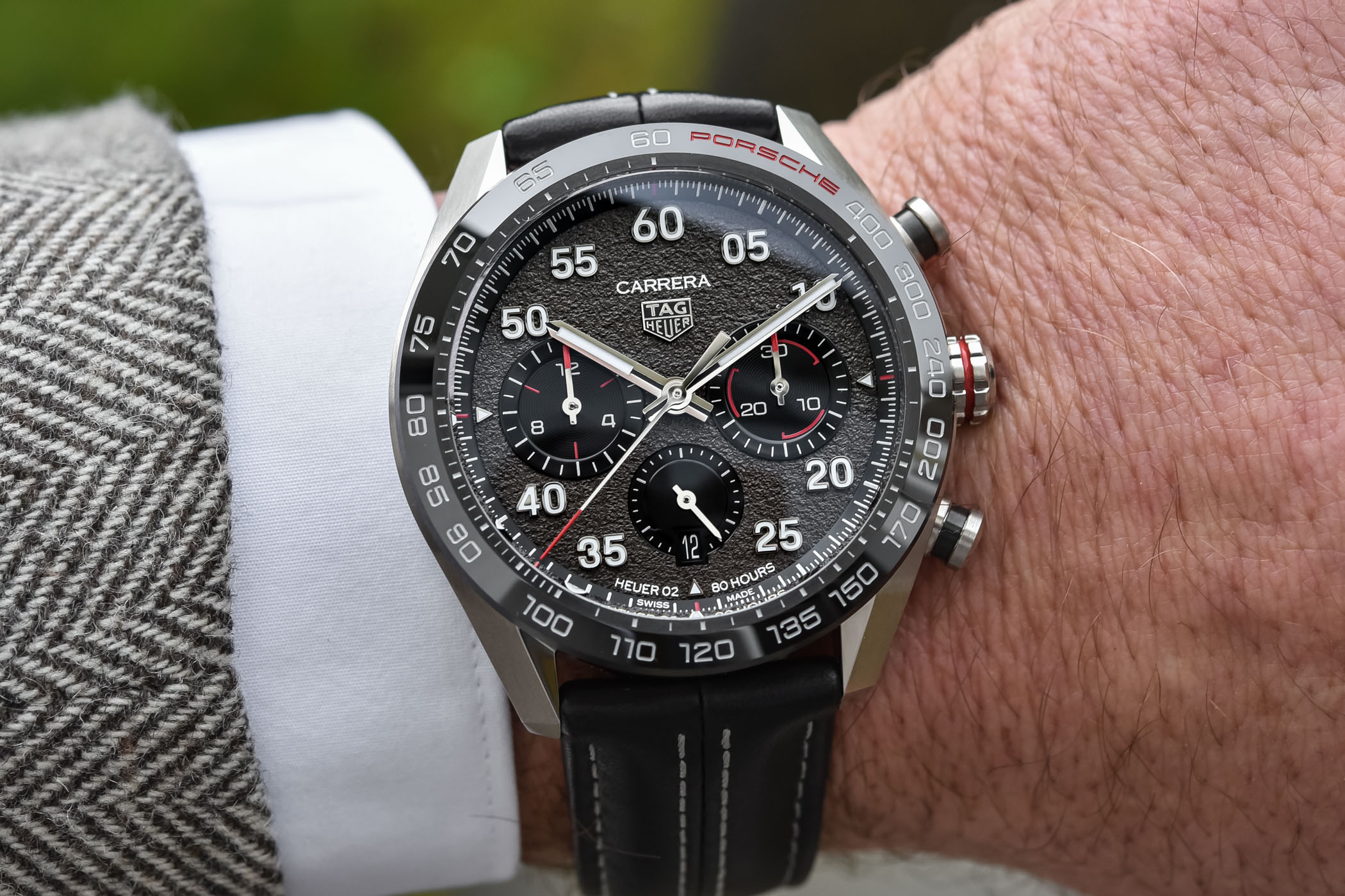



6 responses
Strap this to your skinny wrist and look as smart as you truly are.
A detailed history lesson of both brands.
Thank you.
How does Porsche Design feel about this?
Good question! Sometimes asking the question is answering it…
If a friend said they wanted to buy a Tag I would only recommend the carrera even though I personally don’t like Tags.
I really like this one but can’t look past the price.
I loved the story more than the watch.
I imagine its difficult to create something new in a partnership. There’s a lot going on there.